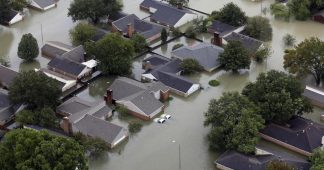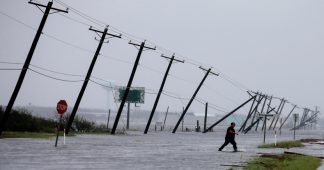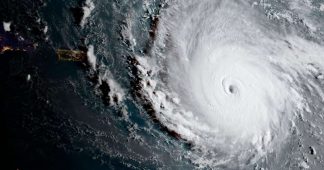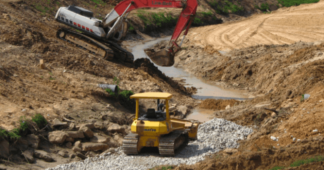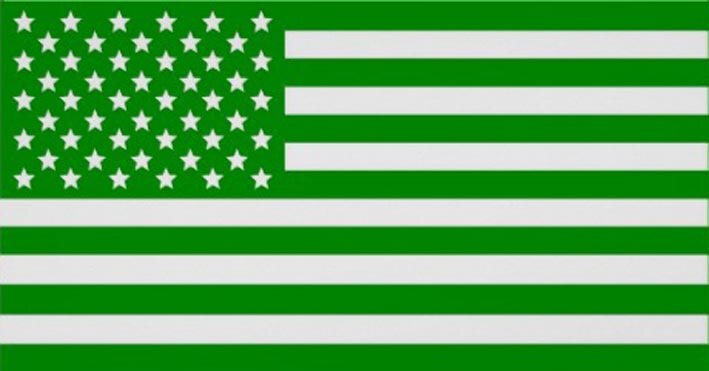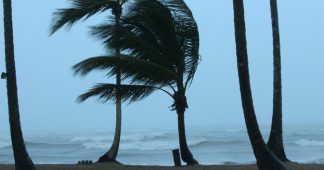As Hurricane Harvey lashed Texas, Naomi Klein wasted no time in diagnosing the “real root causes” behind the disaster, indicting “climate pollution, systemic racism, underfunding of social services, and overfunding of police.” A day after her essay appeared, George Monbiot argued that no one wants to ask the tough questions about the coastal flooding spawned during Hurricane Harvey because to do so would be to challenge capitalism—a system wedded to “perpetual growth on a finite planet”—and call into question the very foundations of “the entire political and economic system.”
Of the two choices, I vote for Monbiot’s interpretation. Nearly forty years ago, the historian Donald Worster in his classic study of one of the worst natural disasters in world history, the Dust Bowl of the 1930s, wrote that capitalism, which he understood as an economic culture founded on maximizing imperatives and a determination to treat nature as a form of capital, “has been the decisive factor in this nation’s use of nature.”
Care must be taken not to imagine capitalism as a timeless phenomenon. Capitalism has a history and that history is important if we are to properly diagnose what happened recently in Texas and is about to happen as Hurricane Irma bears down on Florida. What we need to understand is how capitalism has managed to reproduce itself since the Great Depression, but in a way that has put enormous numbers of people and tremendous amounts of property in harm’s way along the stretch from Texas to New England.
The production of risk began during the era of what is sometimes called regulated capitalism between the 1930s and the early 1970s. This form of capitalism with a “human face” involved state intervention to ensure a modicum of economic freedom but it also led the federal government to undertake sweeping efforts to control nature. The motives may well have seemed pure. But the efforts to control the natural world, though they worked in the near term, are beginning to seem inadequate to the new world we currently inhabit. The U.S. Army Corps of Engineers built reservoirs to control floods in Houston just as it built other water-control structures during the same period in New Orleans and South Florida. These sweeping water-control exploits laid the groundwork for massive real estate development in the post–World War II era.
All along the coast from Texas to New York and beyond developers plowed under wetlands to make way for more building and more impervious ground cover. But the development at the expense of marsh and water could never have happened on the scale it did without the help of the American state. Ruinous flooding of Houston in 1929 and 1935 compelled the Corps of Engineers to build the Addicks and Barker Dams. The dams combined with a massive network of channels—extending today to over 2,000 miles—to carry water off the land, and allowed Houston, which has famously eschewed zoning, to boom during the postwar era.
The same story unfolded in South Florida. A 1947 hurricane caused the worst coastal flooding in a generation and precipitated federal intervention in the form of the Central and Southern Florida Project. Again, the Corps of Engineers set to work transforming the land. Eventually a system of canals that if laid end to end would extend all the way from New York City to Las Vegas crisscrossed the southern part of the peninsula. Life for the more than five million people who live in between Orlando and Florida Bay would be unimaginable without this unparalleled exercise in the control of nature.
It is not simply that developers bulldozed wetlands with reckless abandon in the postwar period. The American state paved the way for that development by underwriting private accumulation.
Concrete was the capitalist state’s favored medium. But as the floods
mounted in the 1960s, it turned to non-structural approaches meant to keep the sea at bay. The most famous program along these lines was the National Flood Insurance Program (NFIP) established in 1968, a liberal reform that grew out of the Great Society. The idea was that the federal government would oversee a subsidized insurance program for homeowners and in return state and local municipalities would impose regulations to keep people and property out of harm’s way.
At the same time that the U.S. government launched the NFIP, a Keynesian crisis that would extend over the course of the next decade and a half began to unfold. Declining corporate profits were brought on by rising wages, mounting class conflict, escalating competition from Japan and western Europe, and increased consumer and environmental regulation. The profit squeeze combined with stagflation and widespread fiscal problems to produce major economic dislocation.
A new form of capitalism began to slowly emerge as business responded to the crisis. Major institutional change occurred in the global economy, in the relationship between capital and labor, and most important for our concerns here, in the state’s role in economic life. In the early 1970s the Business Roundtable was established as a corporate lobbying group. Among its tasks was to undermine various forms of consumer and environmental regulation.
This was the context for the assault on the liberal flood insurance program. By the 1990s, under the Clinton Administration, the pretense of regulating land use on the local level was all but dismissed in favor of a policy that simply encouraged localities to do the right thing to ensure the safety of people and property. It is not an accident that one of the worst-hit developments in Houston—southern Kingwood—was built in the last years of the twentieth century and the aughts right in the Federal Emergency Management Agency’s designated 100-year floodplain.
Nor is there anything the least bit natural in how cities in the postwar United States have functioned as profitable sites for capital accumulation. Developers have been able to derive profits from capitalist urbanization in coastal locations because of what was effectively a giant subsidy by the American state.
Flirtation with disaster is in a sense the essence of neoliberal capitalism, a hyperactive form of this exploitative economic order that seems to know no limits. Some might find comfort in the words of Alexander Cockburn: “A capitalism that thrives best on the abnormal, on disasters, is by definition in decline.”
Others, myself included, worry that the current organization of this market economy to benefit the interests of capitalists, with its blind, utopian faith in the price mechanism, is likely to head in precisely the direction that the economic historian Karl Polanyi predicted in 1944. An institutional arrangement organized around a “self-adjusting market,” he warned, “could not exist for any length of time without annihilating the human and natural substance of society; it would have physically destroyed man and transformed his surroundings into a wilderness.”
Photograph Nathaniel St. Clair
